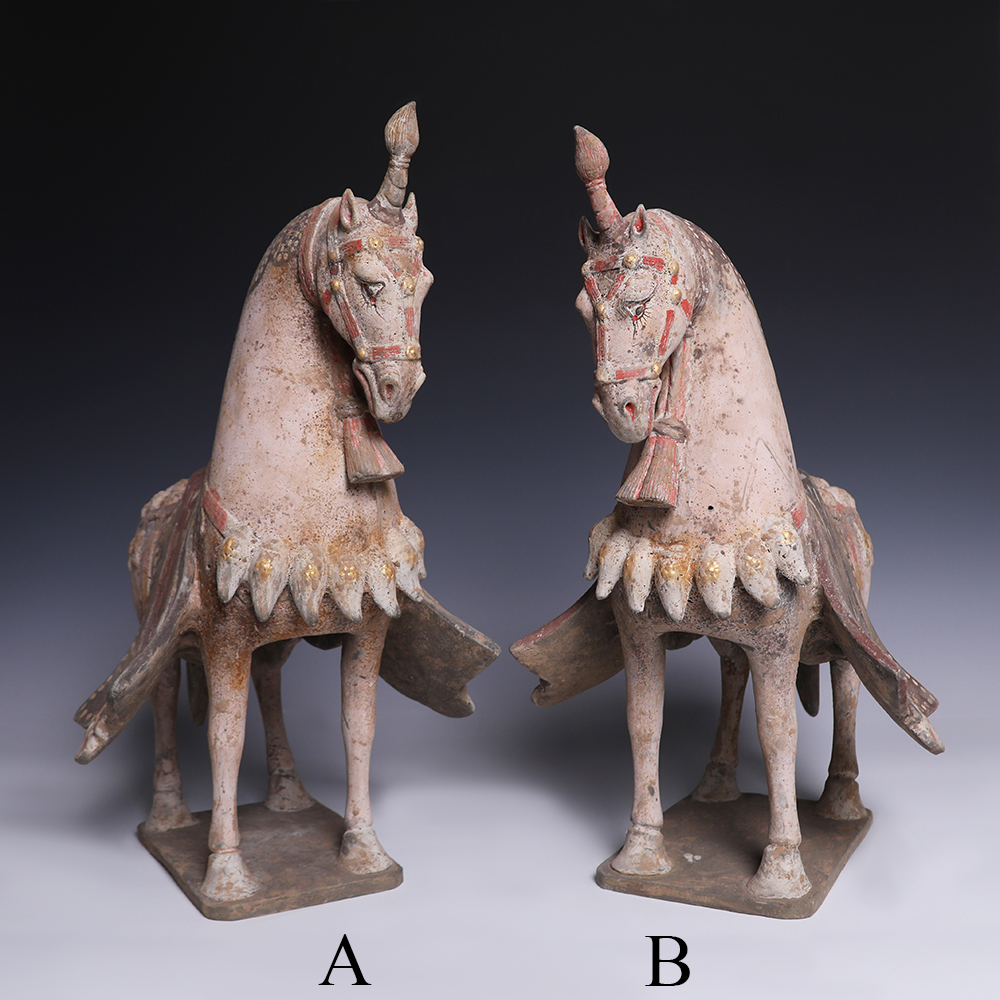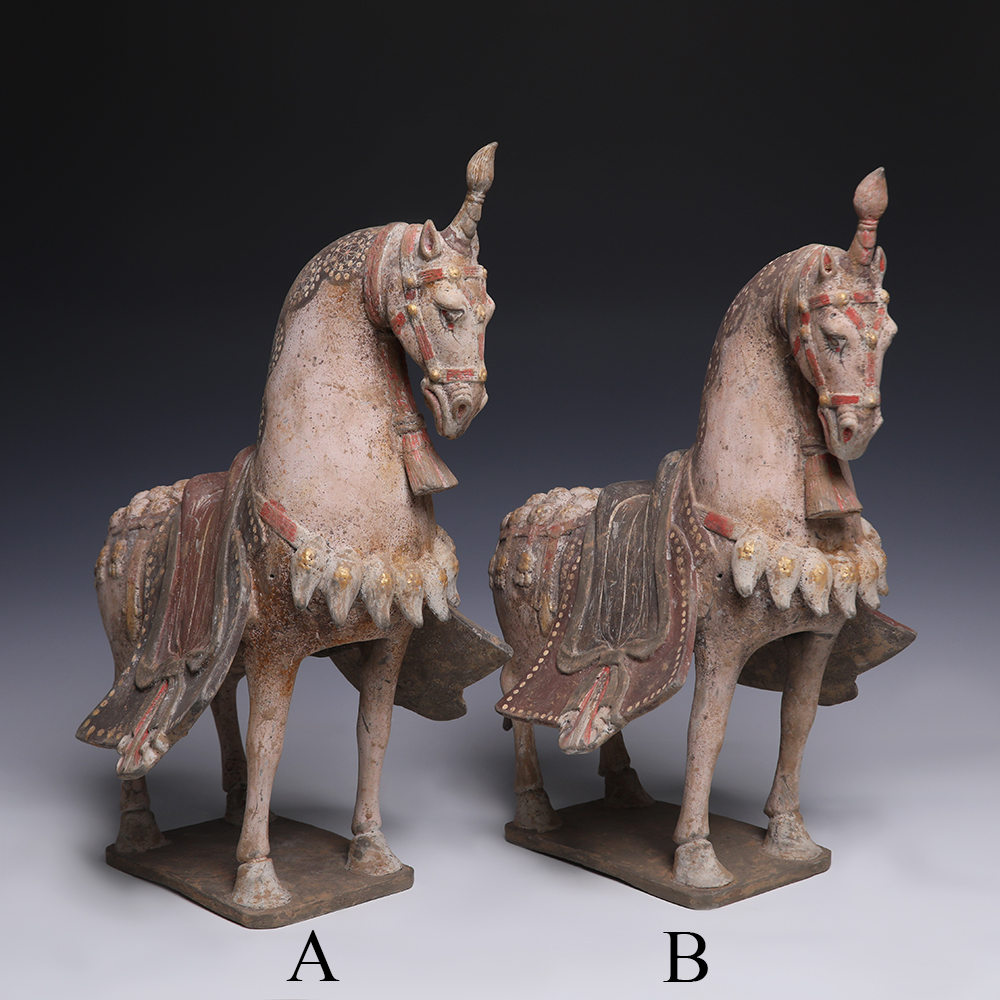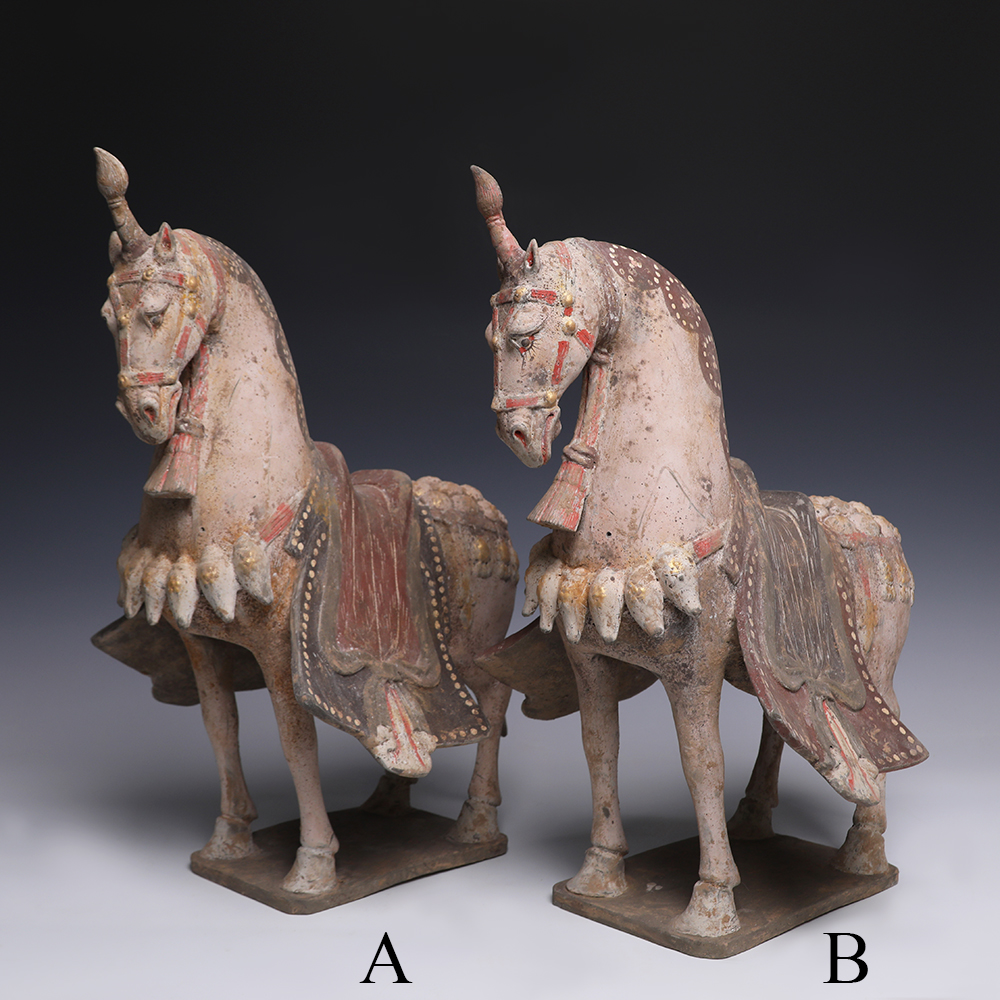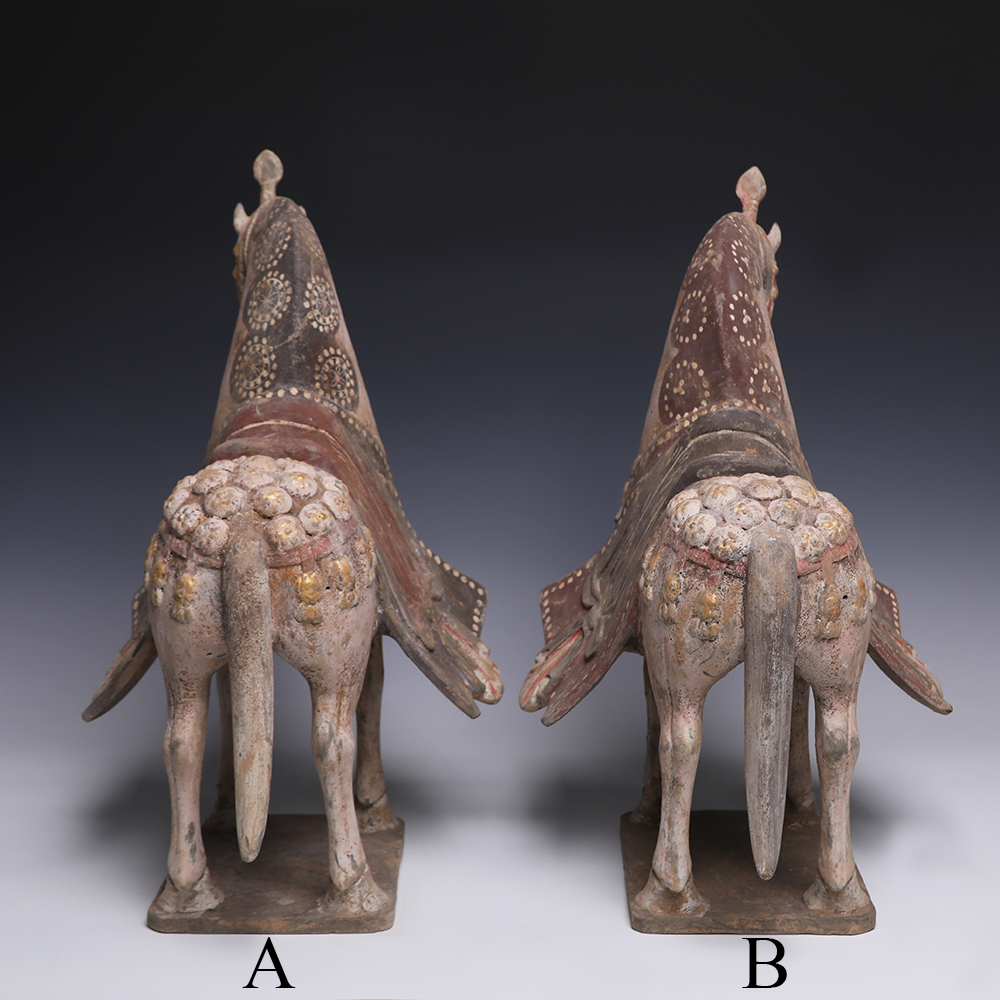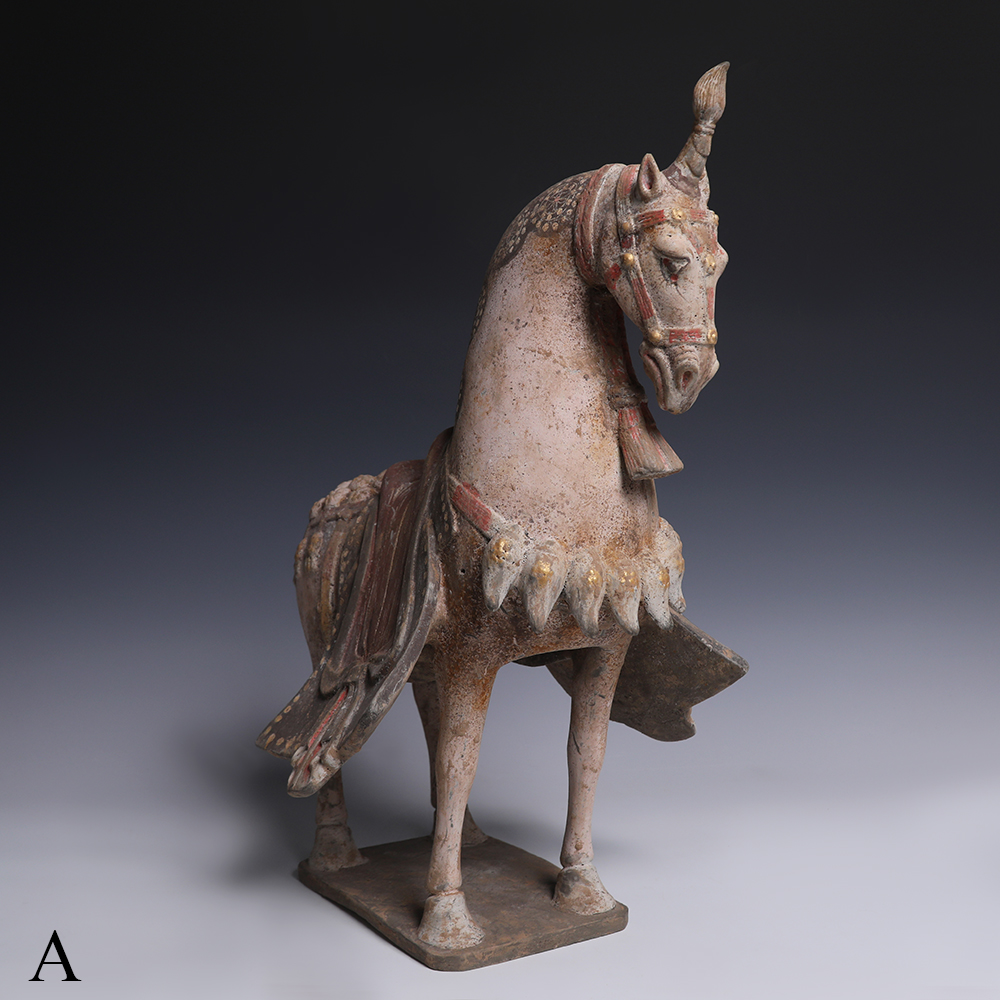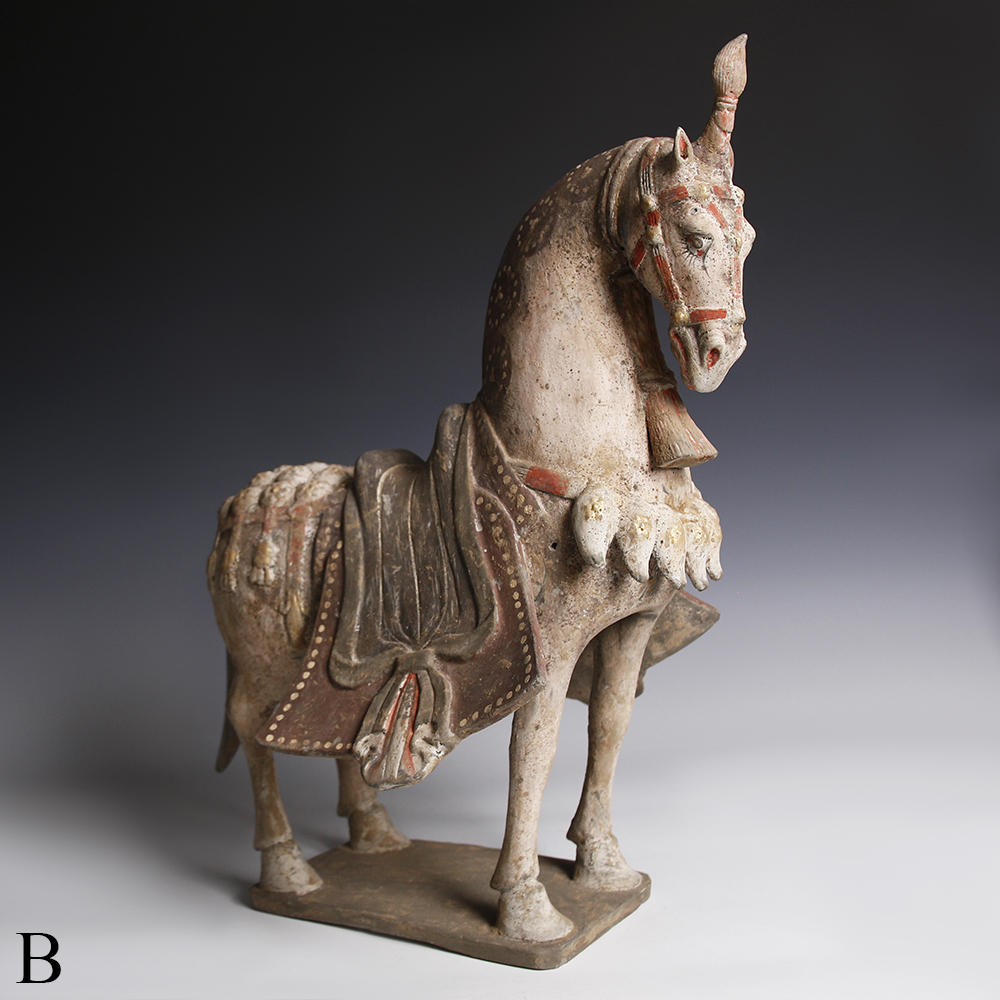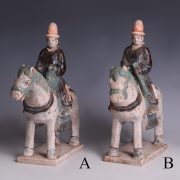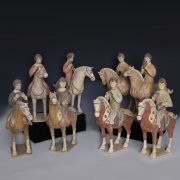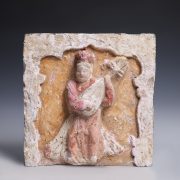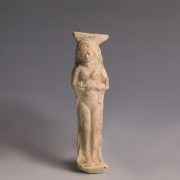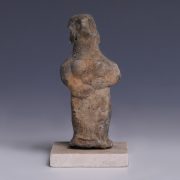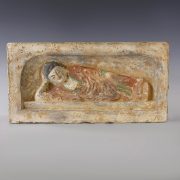The relationship between China and horses dates back to Neolithic times and the first domestication of the animal is believed to have started in the 13th century BC. Brought to China by means of the international Silk Road trade network, horses were a sign of wealth, widely used in warfare, hunting and in the aristocratic pastime of polo. Horses’ statuettes, such as this incredibly fine example, were usually meant to be grave goods to be placed in tombs. It was believed that these figures would serve and assist the deceased in the afterlife. Figures of this type are called mingqi in Chinese, and depict servants, officials, soldiers, musicians, court attendants, dancers and, in the case of animals, horses and Bactrian camels. After Emperor Xiao Wendi’s decree that moved the capital to Luoyang in 494 AD, the style of tomb sculptures altered abruptly, influenced by developments in painting in the southern courts. Thus from the late Northern Wei period, horses became more naturalistic and more richly decorated.
To discover more about horses in Chinese culture, read our relevant blog post: The Horse in Chinese Art and Culture.
